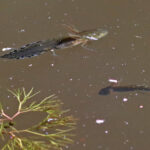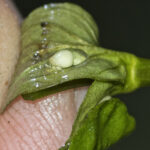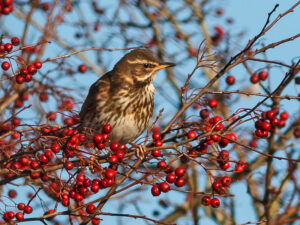Newts found in Froyle Ponds 2023
The wildlife pond near Gid Lane has a good population of Great Crested Newts that also breed there. The number of newts has increased substantially since the pond was constructed in 2016 when the first newt was recorded there. By 2021 a professional survey using bottle trapping recorded a maximum count of 28 Great Crested Newts and 23 Smooth Newts. This year 2023, I counted 35 GCN larvae on a warm  day in June that were close enough to the water surface for identification with perhaps ten times that number out of sight while hiding in the pond vegetation. This is an outstanding success story achieved by Froyle Wildlife and the volunteers who give their time and effort to maintain the pond and surrounding wildflower meadow.
day in June that were close enough to the water surface for identification with perhaps ten times that number out of sight while hiding in the pond vegetation. This is an outstanding success story achieved by Froyle Wildlife and the volunteers who give their time and effort to maintain the pond and surrounding wildflower meadow.
In the last 12 years there have been a number of newly constructed ponds in Froyle with some in gardens and fields. Froyle Wildlife asked Pete West (from Hampshire Amphibian and Reptile Conservation) to survey selected ponds in April with landowner permission. Smooth Newts and Great Crested Newts were seen in all four ponds surveyed with  evidence of breeding in two ponds at Upper Froyle. Unlike frogs and toads, newt eggs are laid singly on submerged vegetation wrapped in a folded leaf (Water Mint is a favourite).
evidence of breeding in two ponds at Upper Froyle. Unlike frogs and toads, newt eggs are laid singly on submerged vegetation wrapped in a folded leaf (Water Mint is a favourite).
Historically there has been an enormous national decline in their range and abundance over the last century and the Great Crested Newt previously had no records from Lower Froyle but it is now found there as well. The newly constructed ponds don’t just benefit amphibians, they are a magnet for dragonflies, damselflies and other wildlife. Even a small garden pond can help to increase local biodiversity and provide a fascinating window into aquatic life. As the saying goes ‘Just add water’, you could be amazed by the results!























